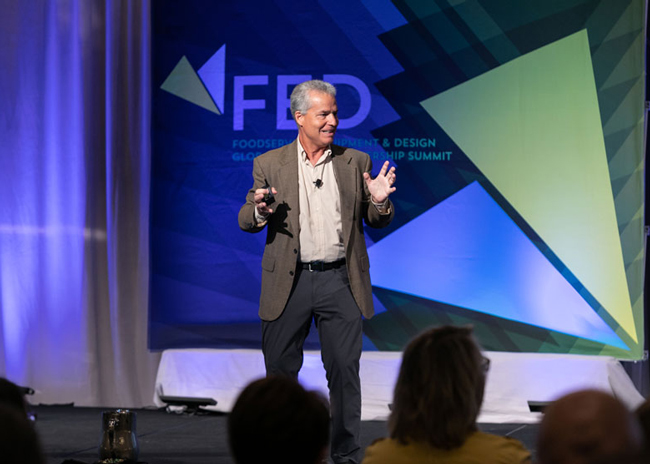Everyone keeps saying that automation and robots are coming. In reality, though, they are already here.
 Juan Martinez presenting at the Foodservice Equipment & Design Thought Leadership ConferenceLast month I had the opportunity and honor to be one of the presenters at FED (Foodservice Equipment & Design Global Thought Leadership). The conference was full of insights and information provided by several industry leaders. My topic was the very hot and active area of automation and innovation.
Juan Martinez presenting at the Foodservice Equipment & Design Thought Leadership ConferenceLast month I had the opportunity and honor to be one of the presenters at FED (Foodservice Equipment & Design Global Thought Leadership). The conference was full of insights and information provided by several industry leaders. My topic was the very hot and active area of automation and innovation.
The essence of my talk was around the need to objectively quantify the areas where labor is being spent in order to be more prescriptive on the potential impact automation and innovation can have on a given foodservice operation. By taking the time to apply techniques of industrial engineering to foodservice, one can determine whether the return on investment makes sense. Without having some metrics on the potential impact, one would not know what to expect and may end up with an effort where the impact does not provide a payback; where the “juice is not worth the squeeze,” as the title of my presentation suggests.
The words automation and robotics regularly come up nowadays because some feel they are the holy grail to combat the labor challenges the industry faces. Sometimes these two words are intended to mean the same, although there are marked differences between them. Automation is more about using a device that can replace an activity that an employee would otherwise do. Robotics, as the word would infer, is using a robot, or a machine that functions as a robot, to do the same. Robotics is usually automation, but automation is not always robotics. Robots typically do one thing at a time, typically in an assembly line fashion. In contrast, an automated machine could do many things at the same time, possibly leading to greater capacity and sales volume for a foodservice operation. You may think I am mincing words, but it’s important to understand the difference between automation and robotics to fully appreciate the impact they can have. Let me tell you why I am suggesting differentiating between these two words.
During my presentation at FED, I defined automation as any equipment or technology platform, process and procedure, place design, product and service offering, that improves the “unit economics” of the concept without additional labor.
This definition suggests a much wider application of automation; one that extends past machines and robots. For example, if a foodservice operation currently cuts chicken, marinates it and then bakes it in the store before serving it to the guests, my definition of automation would apply to buying pre-marinated, baked and cut chicken. One could argue that the latter would not be as good quality, thus the reason they want to go through the process at the store level, but when you add to the quality metric consistency, as I always remind concepts, perhaps this may not be as clear. After all, consistency across what a brand delivers to the guests, is a key part of the quality metric for brands, since they are supposed to deliver the same customer experience across all their locations. I could offer many examples like this one. Can you think of some?
What is your definition of automation? In mine, concepts could apply automation much more easily than waiting for robots or automated assembly machines to begin to address the country’s significant labor crisis.
We clearly see more direct applications of robots and machine-driven automation, but many would contend that while these solutions offer great potential they are not quite ready for primetime. My suggestion to restaurant chains, consultants and suppliers is while you keep your eyes on the options that exist to automate and robotize the operations with the more sophisticated machines that we read about in the news, also be on the lookout for applications and initiatives that extend to the broader definition of automation referenced above. Because at the end of the day, the goal remains to address the industry labor challenges and, in doing so, deliver profitable hospitality.



